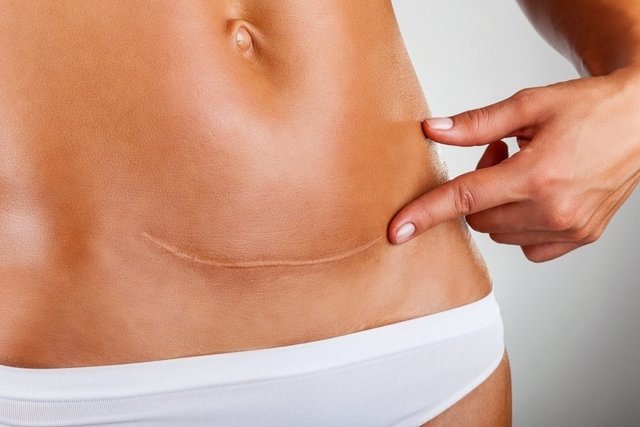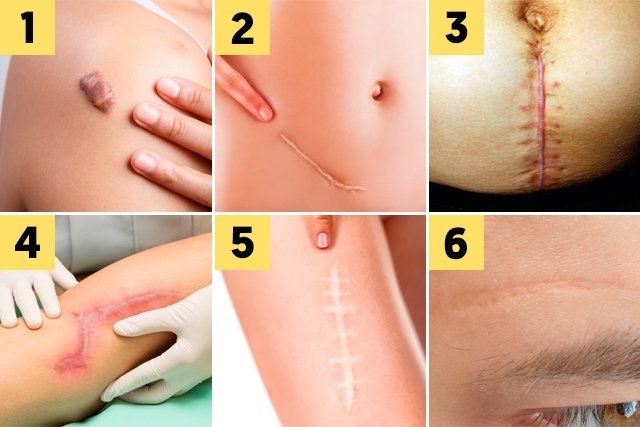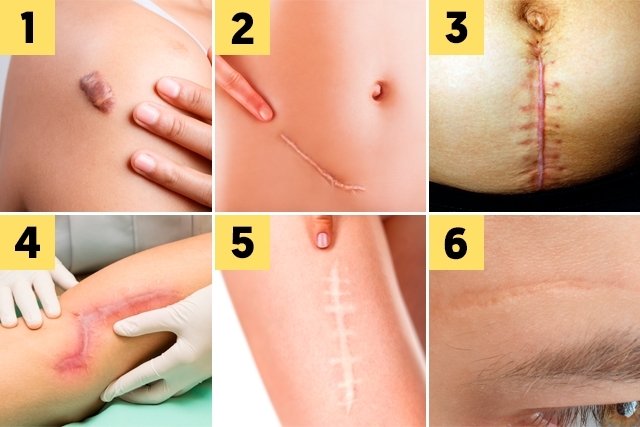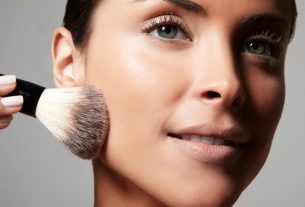Plastic surgery to correct a scar aims to repair changes in the healing of a wound anywhere on the body, caused by a cut, burn or previous surgery, such as a cesarean section or appendectomy, for example.
The objective of this surgery is to correct skin defects, such as irregularities in texture, size or color, providing more uniform skin, and is only performed on more serious scars or when other types of aesthetic treatments do not work, such as the use of silicone plates, radiotherapy or pulsed light, for example. Find out what your scar treatment options are before surgery.

How is the surgery done
The procedure performed to remove the scar depends on the type, size, location and severity of the scar, and is chosen by the plastic surgeon according to the needs and healing tendency of each person, and may use techniques that use cuts, removal or reorientation of affected parts of the skin.
Types of surgery
- Z-plasty: it is the most popular for scar revision;
- Half Z-Plasty: when the adjacent skin on one side of the scar is elastic and on the other it is not;
- Z-plasty in four flaps (Limberg flap): it is particularly interesting for the release of severe scar contractures that bind or restrict normal flexion or in burns;
- Planimetric Z-plasty: it is recommended for flat areas, and the z-plasty triangle is placed as a graft;
- S-plasty: for the treatment of oval contracted scars;
- W-plasty: to improve irregular linear scars;
- Broken geometric lines: to convert a long linear scar into a randomly shaped irregular scar to be less visible;
- VY and type VY advancement: in cases of small contracted scars
- Subcision and filling: For retracted and sunken scars that require filling with fat or hyaluronic acid;
- Dermabrasion: It is the oldest technique and can be done manually or with a machine.
To carry out the surgical procedure, the doctor may request some pre-operative blood tests. As in any surgery, it is recommended to fast for 8 hours, and the type of anesthesia performed depends on the procedure to be performed, which may be local, with light or general sedation.
In some cases, a single procedure is sufficient to guarantee satisfactory results, however, in more complicated cases, repetition or new treatments may be recommended.
What is recovery like?
After surgery, swelling and redness of the area may be noticed, therefore, the results of the procedure begin to be seen only after a few weeks, and complete healing may take months or even 1 year to complete. During the recovery period, it is recommended:
- Avoid intense physical activities;
- Do not expose yourself excessively to the sun for 30 days;
- Never forget to use sunscreen, even after complete healing;
Furthermore, to assist in optimal healing after this surgery, preventing the scar from becoming unsightly again, the doctor may recommend other topical treatments such as applying silicone plates, applying healing ointments or applying compressive bandages, for example.
Who can have the surgery

Scar correction surgery is recommended by plastic surgeons in situations of defects in scar formation, which may be:
- Keloidwhich is a hardened scar, growing above normal due to a large production of collagen, and may be itchy and red;
- Hypertrophic scarwhich is also a thickened scar, due to the disorder of collagen fibers, which may be darker or lighter than the surrounding skin;
- Retracted scar or contracturecauses the surrounding skin to approximate, very common in cesarean sections, abdominoplasties or due to a burn, making it difficult to move the skin and nearby joints;
- Elongated scaris a shallow and loose scar, with a surface lower than that of the skin;
- Dyschromic scarwhich causes a change in skin color, which may be lighter or darker than the surrounding skin;
- Atrophic scarin which the scar is deeper than the relief of the surrounding skin, very common in wounds and acne scars.
The aim of the surgery is to improve the appearance and even out the skin, not always guaranteeing the complete erasure of the scar, and the results may vary according to each person’s skin.
Other scar treatment options
Other possible treatments, which are recommended as a first choice before surgery, are:
1. Aesthetic treatment
There are several techniques, such as chemical peeling, microdermabrasion, use of laser, radiofrequency, ultrasound or carboxytherapy, which are very useful for improving the appearance of lighter scars, such as pimples, or for evening out skin color.
These treatments can be carried out by a plastic surgeon or dermatologist in milder situations, however, in cases of larger scars that are difficult to treat, they may not be effective and other treatments or surgery must be opted for. See, in more detail, some of these aesthetic treatment options to improve the appearance of the scar.
2. Treatment with tapes and ointments
It is done by placing silicone plates, tapes or compressive dressings, recommended by the dermatologist or plastic surgeon, which can be used for weeks to months. Massages with special products can also be recommended, which help to reduce thickening, fibrosis or changes in the color of the scar.
3. Injectable treatment
To improve the appearance of depressed or atrophic scars, substances, such as hyaluronic acid or polymethylmethacrylate, can be injected beneath the scar, in order to fill the skin and leave it smoother. The effect of this treatment can be more temporary or lasting, depending on the type of material used and the condition of the scar.
In hypertrophic scars, corticosteroids can be injected to reduce collagen formation, reducing the size and thickening of the scar.

Sign up for our newsletter and stay up to date with exclusive news
that can transform your routine!
Warning: Undefined array key "title" in /home/storelat/public_html/wp-content/plugins/link-whisper-premium/templates/frontend/related-posts.php on line 12
Warning: Undefined array key "title_tag" in /home/storelat/public_html/wp-content/plugins/link-whisper-premium/templates/frontend/related-posts.php on line 13




